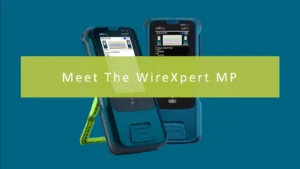AI-Driven Amino Acid Drugs Surface as a Promising Treatment for Eye Conditions
The rapid evolution of artificial intelligence (AI) promises to revolutionize multiple sectors, and one area seeing tangible benefits is drug development. Historically, the creation of new medicines was a time-consuming endeavor, but AI-driven amino acid research is proving to accelerate the early developmental stages and get drugs to the market faster.
Researchers at the Wilmer Eye Institute and Johns Hopkins Medicine have now harnessed artificial intelligence (AI) to predict which amino acid components in therapeutic proteins can effectively deliver drugs to animal eye cells. By deeply understanding protein structures, AI can refine drug formulations, potentially minimizing harmful side effects while helping to treat eye conditions such as glaucoma and macular degeneration.
But how reliable are these AI-driven amino acid models for drug delivery, and where do they stack up when it comes to current drug delivery methods such as eye drops or implantable devices? To explore AI’s potential in this field, we turn to an expert Dr. Christopher Clark, Professor at Indiana University.
Christopher’s Thoughts:
“Hi. I’m Dr. Christopher Clark, a professor at Indiana University.
AI offers an amazing tool for the development of new drugs. The biggest gain is speed to market. What that means is the early stage of development where we can reduce the amount of time that a drug takes to get to market. All that though is is in the developmental time, not in the testing time.
Now, Any AI developed drug probably can have some side effects as well, potentially serious. For that reason why, they’re going to have to go through the same FDA testing that any other drug is developed, and that’s going to take the exact same amount of time. So really the game for AI is in the development at this moment in time, not in the testing itself, which still is substantially months to years in often, in most cases. That is to say in no way does AI develop treatments, are any less safe than traditional treatments.
Oftentimes, the AI development may remove some of the serious side effects from drugs that are coming out of the market because they look at that protein structure, and they remove the protein structure that causes some of those side effects or can reduce or remove those proteins to make those side effects less. AI developed amino acid sequencing models like DeepMine’s AlphaFold have been shown to be very accurate and identify protein structures of millions of proteins.
With this understanding of the protein structure, it’s highly possible to improve drug delivery to the structures of these such as the eye. An example of that is think of eye drops. We put a drop on top of the cornea. That drop has to penetrate through multiple layers of that cornea to get into the eye to treat the things inside the eye like macular degeneration, cataracts, things like inflammatory mediators inside the eye.
Because those different layers are both hydrophobic and hydrophilic going back forth, it is really tough to get our drugs currently from the front of the eye back to that eye because penetration isn’t very good. What does hydrophobic and hydrophilic mean? Think of it like trying to send some something through multiple layers of oil, water, oil, water. It’s really tough to get a molecule to go and do that.
AI offers a potential there to get better penetration to inside the eye itself by circumventing some of these features of the eye, and thereby improving the overall quality of treatment that we have for our eyes.”
Article written by Cara Schildmeyer.








